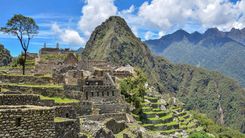Playa Las Sombrillas
Playa Las Sombrillas is a mellow beach in Lima’s Barranco district, right below the cliffs along the Costa Verde. It gets its name from the umbrellas that used to line the shore, though these days it’s a bit more bare-bones.
Still, it’s a convenient place to catch some sun or cool off without leaving the city. The beach is sandy, usually has gentle waves, and tends to draw a mix of locals and low-key visitors.
Because it’s right in Barranco, you can pair your beach time with a walk through the district’s street art, museums, or cafés. There are no lifeguards, so it’s swim-at-your-own-risk. Facilities are minimal, but you’ll find restrooms nearby and a small free parking area—not always easy to snag a spot, especially on weekends.
It’s not the cleanest stretch of coast, but if you’re after a casual beach day close to food, bars, and galleries, this Peru beach is easy to get to and easy to enjoy and is certainly one of the best things to do in Lima.
How to get to Playa Las Sombrillas
Driving from central Lima, follow Avenida La Marina to the Circuito de Playas and head south. For public transport, take the Metropolitano BRT to the Balta stop and either walk about 20 minutes down to the beach or grab a colectivo heading that direction.
Buses from Miraflores and San Isidro (like routes 18 and 19) go toward Barranco as well. If you're planning a trip to the city, see our guide to how many days you need in Lima.
When to visit Playa Las Sombrillas
Summer in Lima runs from December to March, when it’s warm—usually 68–82°F (20–28°C)—and generally sunny. Early mornings are quietest and best for a swim before things get busy. If you want to catch a sunset, late afternoon is a good time to go—and it puts you in a nice spot to head straight into Barranco afterward for food or drinks.




